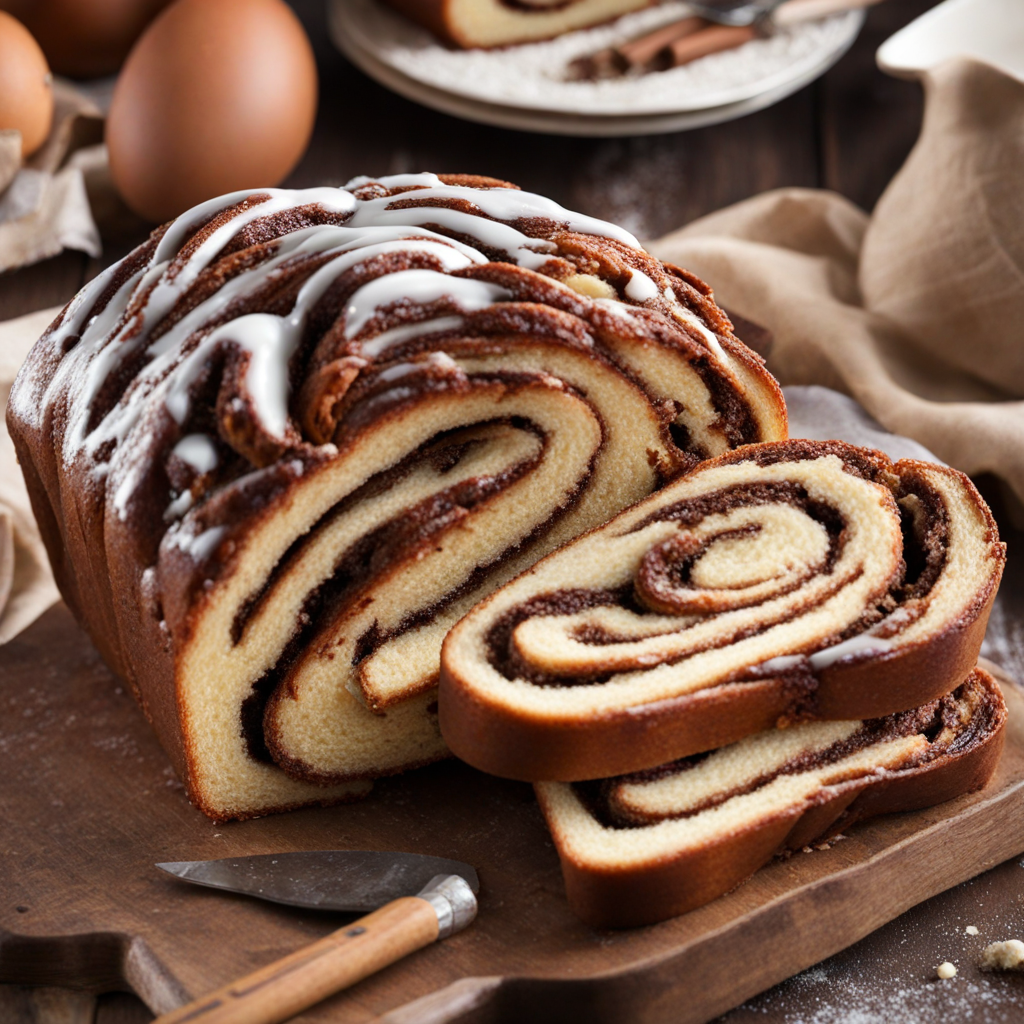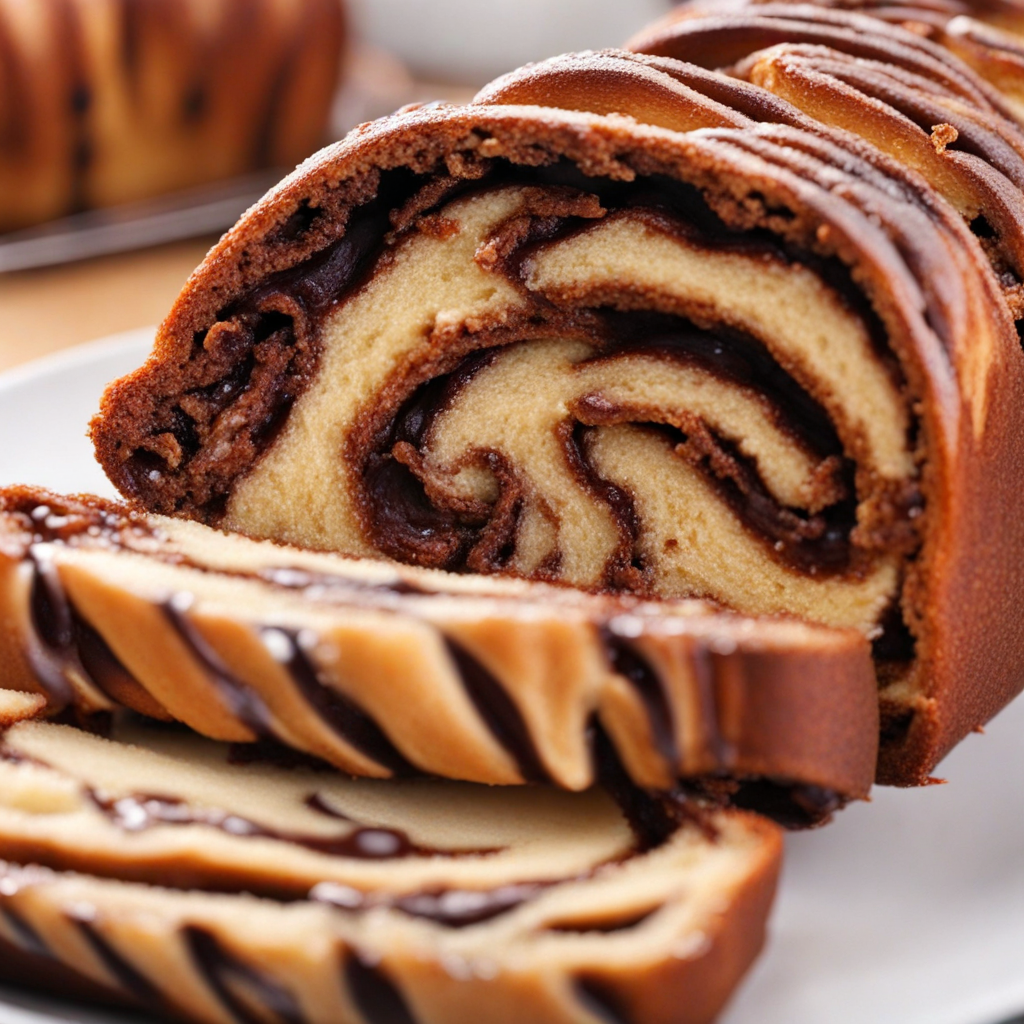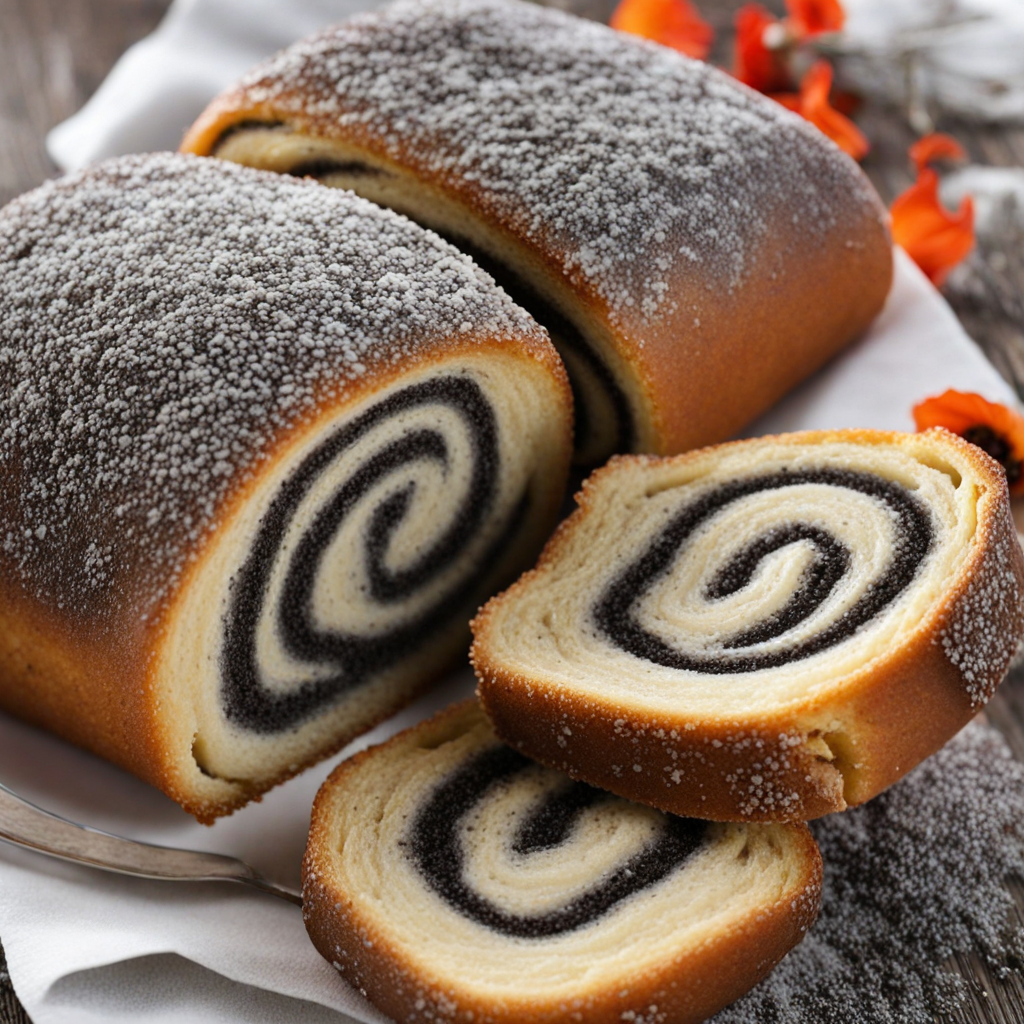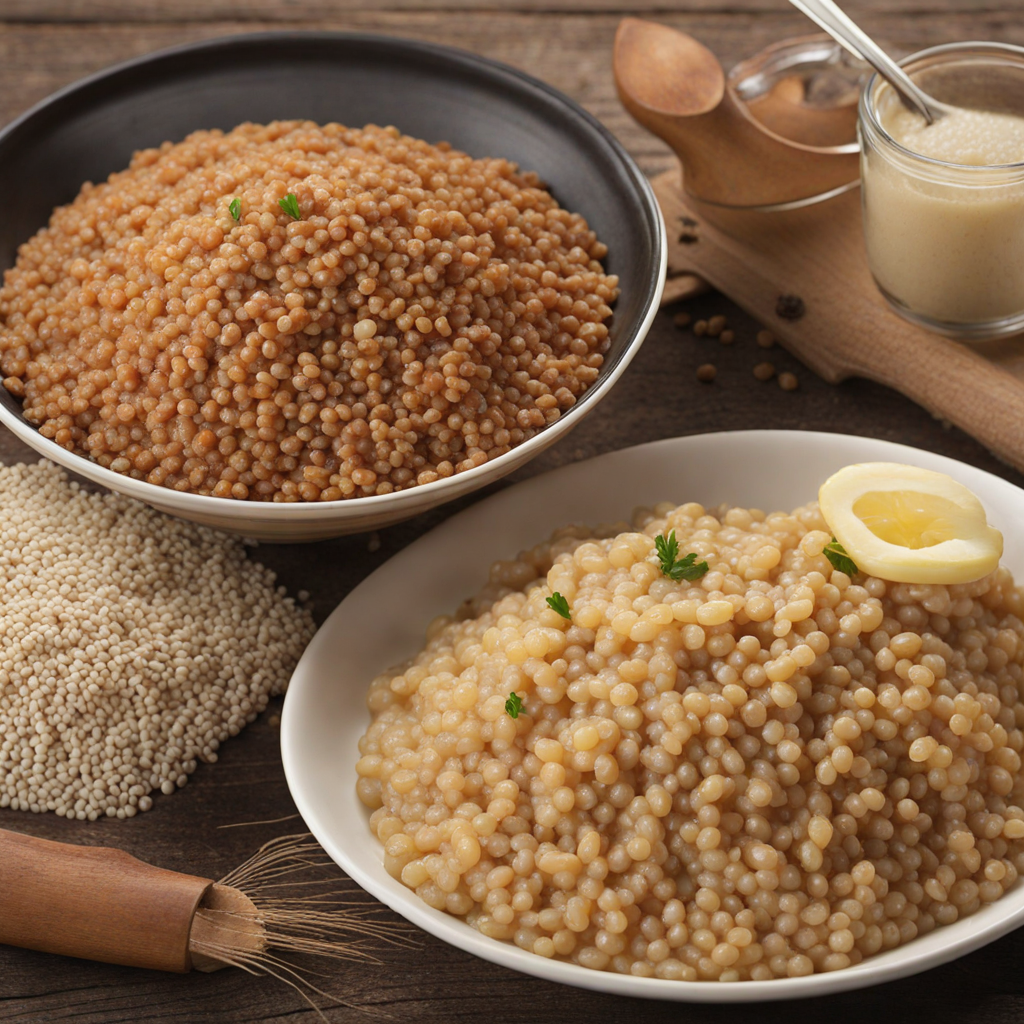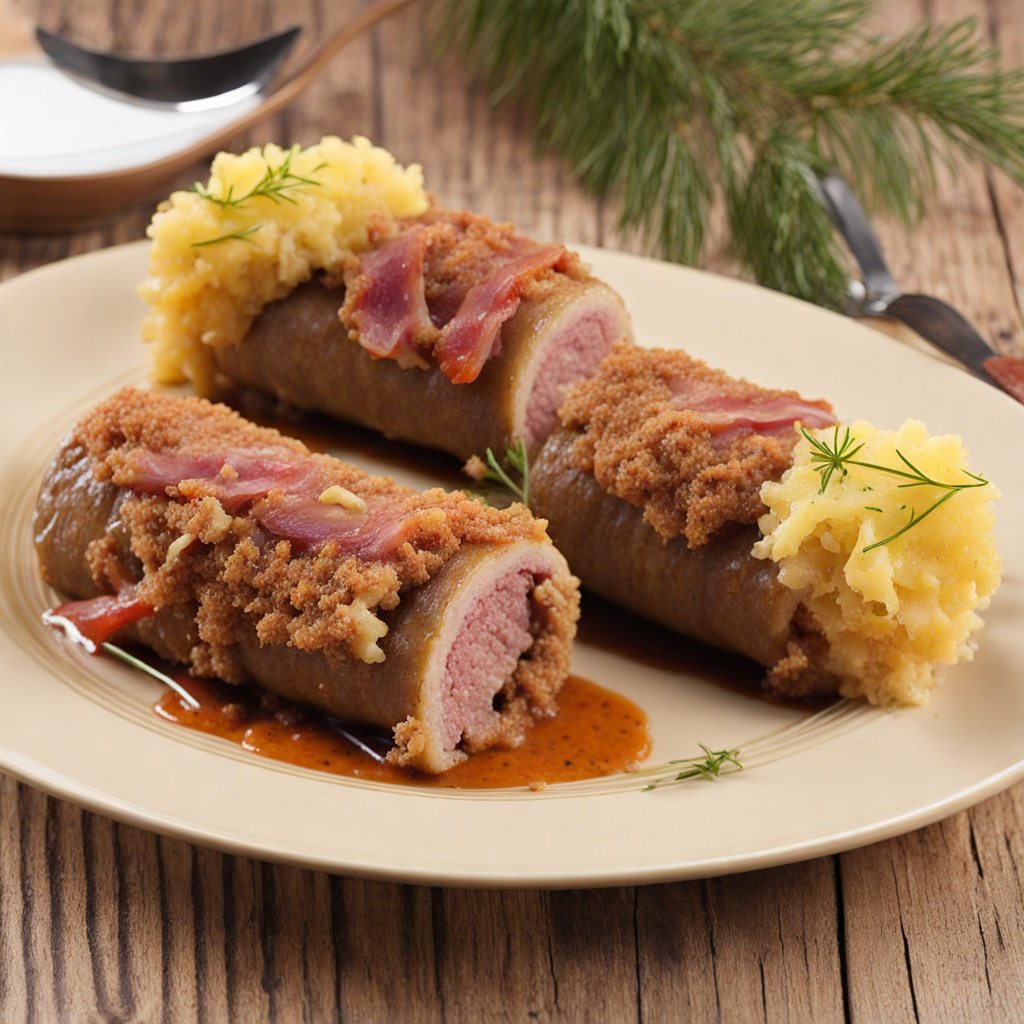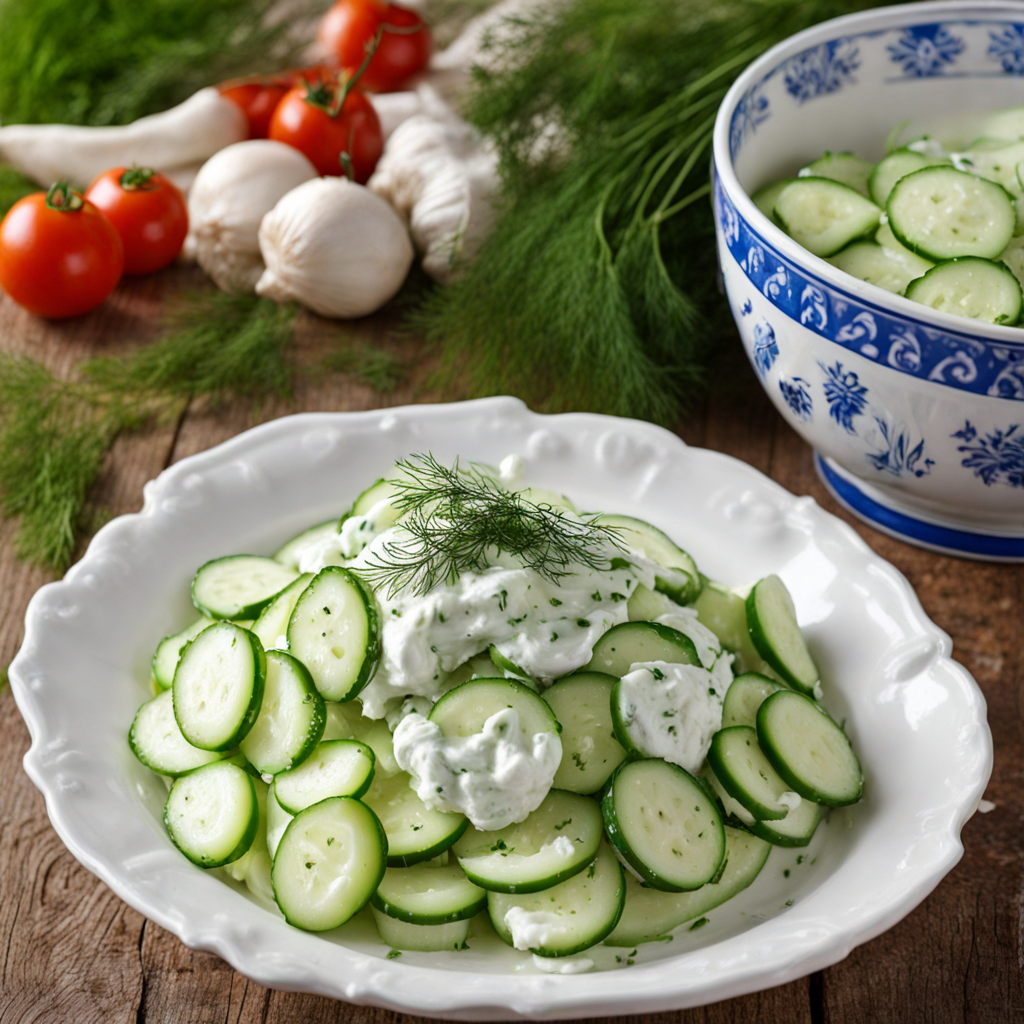Babka
Babka is a traditional Polish sweet bread that boasts a rich history and a delightful flavor profile. Its name, derived from the Polish word for "grandmother," reflects the cherished family recipes passed down through generations. This indulgent treat is typically characterized by its soft, fluffy texture and a beautifully braided or twisted appearance, often filled with a variety of flavors such as chocolate, cinnamon, or fruit preserves. The dough is enriched with butter, eggs, and milk, contributing to its luxurious mouthfeel and making it a perfect accompaniment to coffee or tea during family gatherings or festive occasions. As you take your first bite of Babka, you'll be greeted by a harmonious blend of sweetness and warmth. The outer crust is golden and slightly crisp, giving way to a tender, moist interior that melts in your mouth. The filling, whether it be a rich chocolate ganache or a spiced cinnamon swirl, adds complexity and depth to the overall taste experience. Each slice reveals intricate layers, showcasing the artistry involved in its preparation, and inviting you to savor every bite. Babka is more than just a dessert; it embodies the spirit of Polish hospitality and the joy of sharing food with loved ones. Often enjoyed during special occasions like Easter or Christmas, this delightful bread can also be found in bakeries year-round, where it is lovingly made by skilled bakers. Whether you are enjoying a slice fresh out of the oven or toasted with a spread of butter, Babka offers a unique taste of Polish culture that is sure to captivate your senses and leave you yearning for more.
How It Became This Dish
The History of Babka: A Sweet Journey Through Time Babka, a delightful sweet bread with deep roots in Eastern European cuisine, particularly in Poland, carries with it a rich tapestry of history, culture, and tradition. While its name translates to "grandmother" in Polish, the pastry itself embodies a legacy filled with familial warmth, cultural significance, and evolving culinary practices. #### Origins of Babka The origins of babka can be traced back to the Jewish communities of Poland in the 19th century, although its exact inception is shrouded in the mists of time. The word "babka" likely derives from the Slavic word for "grandmother," and it is said that the loaf may have been inspired by a cake baked by Jewish grandmothers for their families. Babka is believed to have evolved from the traditional Eastern European yeast dough, which was often enriched with eggs and butter, creating a rich, tender crumb that is a hallmark of the pastry. Initially, babka was a simple bread, often made with leftover dough from challah or other festive breads. The dough was rolled with a filling—typically a sweet mixture of cinnamon, chocolate, or fruit—and shaped into a braid or twisted loaf. This technique not only utilized ingredients that might otherwise go to waste but also added a visual appeal to the bread that would make it a centerpiece at family gatherings. #### Cultural Significance Babka holds a cherished place in Jewish culture, particularly during celebrations and holidays. In many Jewish homes, it became a staple during Shabbat and holidays, symbolizing abundance and sharing. The preparation and enjoyment of babka often brought families together, with recipes passed down through generations, each adding their unique touch. The connection between babka and Jewish tradition is profound. It is often associated with the rich cultural life of Polish Jews before World War II, representing a culinary thread that links generations. Babka is also mentioned in historical accounts of Jewish life in Poland, where it was commonly sold in bakeries, making it accessible to a broader audience. Yet, it was often in the home kitchen where babka truly flourished, with each family producing its variations based on personal taste and regional ingredients. #### Evolution Over Time As the 20th century progressed, so did the popularity of babka, especially among Jewish immigrants who settled in the United States. With the migration of Eastern European Jews in the late 19th and early 20th centuries, the culinary traditions they brought with them, including babka, began to intermingle with American culture. In New York City, where a significant Jewish population settled, bakeries began to produce their interpretations of babka, leading to variations in flavors and fillings. In America, the chocolate babka emerged as a beloved interpretation of the traditional pastry. This version typically features a rich chocolate filling swirled throughout the dough, topped with streusel for added texture. The chocolate babka became particularly popular in the late 20th century, especially in Jewish delis and bakeries, and is often considered an iconic New York dessert. The rise of the Internet and social media in the 21st century further propelled the popularity of babka, leading to a resurgence in interest among food enthusiasts and home bakers alike. Recipes for babka became widely shared online, encouraging people to experiment with flavors and fillings beyond the traditional cinnamon and chocolate. Innovative combinations, such as Nutella, salted caramel, and even savory versions, began to emerge, showcasing the versatility of this beloved bread. #### Modern Interpretations and Global Influence Today, babka is enjoyed well beyond its Eastern European roots. It has transcended its cultural boundaries, becoming a gourmet item in bakeries around the world. Chefs and home bakers alike continue to experiment with the classic recipe, incorporating global flavors and trends into their creations. The rise of artisanal baking has led to an appreciation for high-quality ingredients, and many bakers now emphasize the importance of sourcing organic flour and natural sweeteners, thus reviving traditional baking methods. In addition to flavor innovation, the aesthetic presentation of babka has also evolved. The intricate twisting and braiding techniques have been celebrated on social media, with bakers showcasing their elaborate designs and colorful fillings. This has contributed to babka’s status as not just a delicious treat but also a visual delight that captures the attention of food lovers everywhere. #### Babka in Contemporary Culture Babka has also made its mark in popular culture, appearing in television shows, cookbooks, and food blogs. Its representation in media often highlights the nostalgia and comfort associated with the bread, tapping into themes of heritage, family, and the joy of sharing food. The process of making babka is frequently portrayed as a labor of love, invoking memories of family gatherings and the warmth of home. The modern food scene has embraced babka as a symbol of culinary fusion, where traditional recipes meet contemporary techniques. Bakeries across the globe now offer a diverse array of babka flavors, appealing to a wider audience and inviting everyone to experience this delightful bread. #### Conclusion Babka is more than just a sweet bread; it is a vessel of history, culture, and familial love. From its humble origins in Poland's Jewish communities to its modern status as a global delicacy, babka has evolved while retaining its essential character. As it continues to inspire bakers and food lovers alike, babka serves as a delicious reminder of the connections we share through food and the stories that bind us to our heritage. Whether enjoyed at a family gathering, a festive holiday, or simply as a treat with coffee, babka remains a testament to the power of culinary tradition and innovation. The legacy of this beloved pastry is sure to endure, bridging generations and cultures through the universal language of food.
You may like
Discover local flavors from Poland


